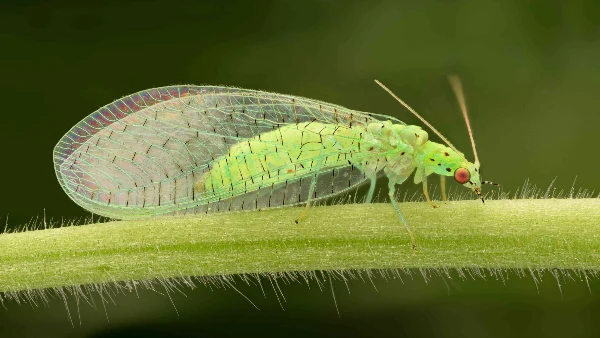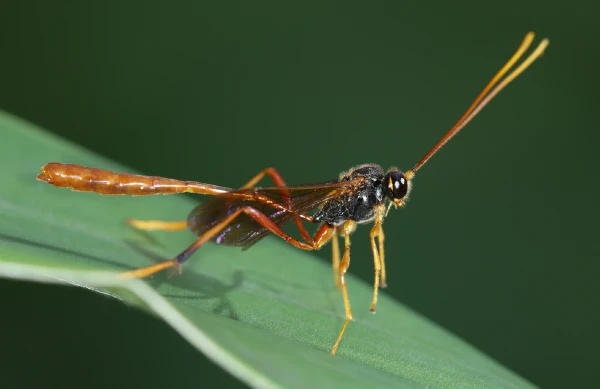Integrated Pest Management (IPM) has revolutionized agricultural practices by aiming to reduce the reliance on chemical pesticides while ensuring sustainable and economically viable crop production.
In recent years, the use of beneficial insects has emerged as a prominent and environmentally friendly approach to pest control in greenhouse horticulture.
In this article, we will delve into the critical role of beneficial insects in greenhouse IPM strategies, highlighting their significance in maintaining a thriving and healthy crop ecosystem.
Understanding the Importance of Beneficial Insects
Beneficial insects are integral to maintaining the delicate balance of pests and diseases in agricultural systems. These insects, including predators, parasitoids, and pollinators, each serve a specific function in pest control.
Predators consume a wide range of pests, while parasitoids lay their eggs inside host pests, leading to their eventual demise.
Pollinators, such as bees and butterflies, are crucial for the reproductive success of numerous flowering crops.
Reducing Reliance on Chemical Pesticides
One of the primary advantages of incorporating beneficial insects into greenhouse pest control is the significant reduction in the dependence on chemical pesticides.
Chemical pesticides can have adverse effects on the environment, including the development of pesticide resistance in pests and the potential accumulation of residues in crops.
By introducing beneficial insects, growers can minimize the use of pesticides, promoting a healthier and more sustainable production system.
Targeted Pest Control
Beneficial insects offer a targeted approach to pest control, focusing on specific pest species while sparing non-target organisms.
Unlike broad-spectrum chemical pesticides, which can harm beneficial insects and disrupt the overall ecosystem, natural enemies selectively prey on pest populations, maintaining a delicate balance that promotes long-term pest control.
Common Beneficial Insects Used in Greenhouse IPM
Ladybugs (Coccinellidae)

Ladybugs are renowned and widely utilized beneficial insects in greenhouse pest control. They primarily feed on aphids, scale insects, mealybugs, and mites.
Ladybugs are highly effective in reducing aphid populations, which are notorious for causing damage to various crops.
Additionally, their visually appealing appearance makes them popular among growers and consumers alike.
Green Lacewings (Chrysopidae)

Green lacewings are voracious predators that feed on a variety of soft-bodied pests, including aphids, thrips, whiteflies, and caterpillar eggs.
The larvae of green lacewings are particularly beneficial, actively searching for prey and consuming large numbers of pests during their development stage.
Parasitoid Wasps (Hymenoptera)

Parasitoid wasps, which are small non-stinging wasps, lay their eggs inside host pests.
As the eggs hatch, the larvae feed on the host, eventually causing its death.
These wasps are highly effective against pests such as whiteflies, aphids, and caterpillars. Several species of parasitoid wasps are commercially available for greenhouse applications.
Implementing Beneficial Insects in Greenhouse IPM
Accurate Identification and Monitoring
To effectively incorporate beneficial insects into greenhouse IPM programs, it is crucial to accurately identify and monitor pest populations.
Regular scouting and monitoring enable growers to assess pest pressure, identify pest species, and evaluate the effectiveness of beneficial insects in controlling the pests.
Timing and Release Strategies
Timing plays a crucial role in the successful introduction of beneficial insects.
Their release should align with the presence of pest populations to ensure their establishment and efficacy.
Factors such as temperature, humidity, and crop growth stage should be considered when determining the optimal timing and release rates of beneficial insects.
Habitat Enhancement and Conservation
Creating a conducive environment for beneficial insects is essential for their long-term survival and effectiveness.
This can be achieved through habitat enhancement and conservation measures, such as providing nectar-rich flowers for adult natural enemies, installing shelter structures, and minimizing the use of broad-spectrum pesticides.
More To Discover
Challenges and Considerations
While beneficial insects offer significant benefits in greenhouse pest control, several challenges and considerations must be addressed for successful implementation:
Compatibility with Other Pest Management Strategies
Beneficial insects are most effective when used as part of an integrated approach, complementing other pest management strategies.
Growers should assess the compatibility of beneficial insects with existing practices, such as cultural controls, physical barriers, and targeted pesticide applications.
Knowledge and Expertise
Proper understanding of the biology, behavior, and requirements of beneficial insects is crucial for their successful implementation.
Growers may need to seek advice from agronomists, entomologists, or other experts to ensure the correct selection, release, and monitoring of beneficial insects.
Embracing Beneficial Insects for Sustainable IPM
Beneficial insects play a vital role in greenhouse Integrated Pest Management, offering a sustainable and effective alternative to chemical pesticides.
Their targeted pest control, reduced pesticide reliance, and ecological benefits make them an essential component of modern horticultural practices.
By recognizing their importance, selecting the appropriate natural enemies, and implementing them within a well-planned IPM strategy, growers can enhance the sustainability and productivity of their greenhouse operations while minimizing environmental impacts.



















